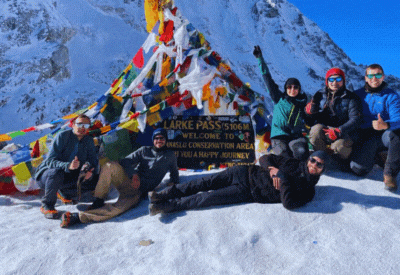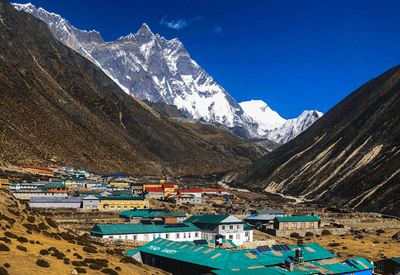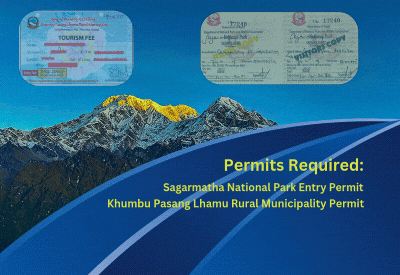The Mardi Himal trek can be a really memorable journey for nature wanders and cultural enthusiasts. A more meaningful and rewarding connection with the communities you encounter on your journey is created when you embrace the rich tapestry of cultures along the Mardi Himal route. The Mardi Himal trek offers a great variety of cultural and traditional highlights, which will enhance the overall traveler's experience. Some ethnic groups and communities can be encountered along this trip, each of which is unique in its cultural practices.
Culture & Traditions along Mardi Himal Trek
Table of Contents
For trekkers, this more holistic and immersive experience is gained when they engage in the culture and traditions of their host regions on the Mardi Himal trek. It's a journey that isn't just physically satisfying, but also intellectually stimulating and culturally enriching, because of the interplay between spectacular natural landscapes and vibrant cultural tapestry.
Some of the cultural aspects that you can get to enjoy on your route to the Mardi Himal trek are presented here:
Bona fide culture: The Mardi Himal Trek passes past communities inhabited by many ethnic groups, including the Gurung, Magar, and Tamang. Trekkers obtain a true understanding of the customs, rituals, festivals, and creative manifestations that have molded these people for decades by experiencing their cultures and traditions.
Gurung culture: The region is inhabited by a wide array of ethnic groups. The majority of residents of Gurung people in the Mardi Himal trekking route have put themselves at the forefront of cultural display. The trail passes through several Gurung villages, where travelers can get immersed in the unique customs and traditions of the Gurung ethnic group. A visit to their traditional dress, architectural style, and daily lifestyle provides an insight into their rich heritage.
Festivals and celebrations: The appropriate or peak trekking season often takes place at the time of regional festivals marked by local communities. It is an impressive experience to be part of these celebrations, whether Dashain, Tihar or Mani Rimdu, where the trekkers are able to see vibrant Hindu rituals, traditional dances, musical recitals, and colorful processions that create a sense of celebration in their journey.
Traditional Art and Architecture: Traditional architectural styles, such as elaborate dwellings, monasteries, and temples, are displayed in the villages on the trail. These houses, built of stone, wood, and mud, demonstrate local workmanship and the knowledge of traditional building traditions is really helpful in getting to know about the people living in here. It provides an insight into the local craftsmanship, architectural techniques, and historical significance attached to these buildings. Also, you have an opportunity to see the art tradition and skill of this region through encounters with local artistic objects like hand-tufted textiles, woodcarvings, or ceramics.
Warm Hospitality: Warm hospitality and welcoming nature are the significance of the local residents in the trekking route towards the visitors. Travelers will be able to experience genuine warmth and hospitality in the communities while staying at tea houses or homestays run by local families. The exchange of culture and the strengthening of connections among travelers and local populations are facilitated by this interaction.
Cultural immersion: It is possible for travelers to immerse themselves in the rich cultural tapestry of this region when they interact with locals. A unique opportunity to witness the everyday lives, traditions, and customs of locals firsthand is provided by working together with them in order to foster a greater understanding and appreciation of their way of life.
Local cuisine exploration: An essential element of the cultural experience on the trail is to sample local cuisine. Travelers have the opportunity to enjoy authentic tastes and culinary traditions as they are served traditional cuisine, prepared with locally produced ingredients and flavors special to this region. Cultural exchange as well as an understanding of traditional food practices can also be achieved when local meals are shared.
Cultural Respect: It's important to be conscious of, and abide by, the customs and traditions of these places during your journey. A harmonious interaction with local culture contributes to mutual respect and understanding, which can be attained by learning basic greetings, knowledge of dress codes as well as responsible tourism practices such as respecting sacred sites and local norms.
Legends and folklores: Experience with locals can give you an insight into authentic folklore and old tales that have become legends in the course of generations. The communities on the trekking route are rich in oral tradition, offering an insight into their history, beliefs, and values through listening to these stories. You can get to hear different stories about different things from their own perspective.
However, at present, the ancient culture and traditions of the Mardi Himal trek route have been profoundly influenced by modern influences. The introduction of new customs and practices has also been fostered by exposure to a variety of cultures through tourism. Traditional songs, dances, and festivals had been influenced by this exchange of ideas and interaction with visitors from all parts of the world that incorporated new elements in their performances. Thus, the local economy, lifestyle, and infrastructure have changed in response to this influx of tourists.
Nonetheless, ancient culture hasn't completely been replaced by modern influences. Efforts are being made to preserve and promote traditional practices, such as local handicrafts, traditional dress, and indigenous knowledge. Community tourism initiatives seek to strike the right balance between modernization and preservation of cultural heritage.









